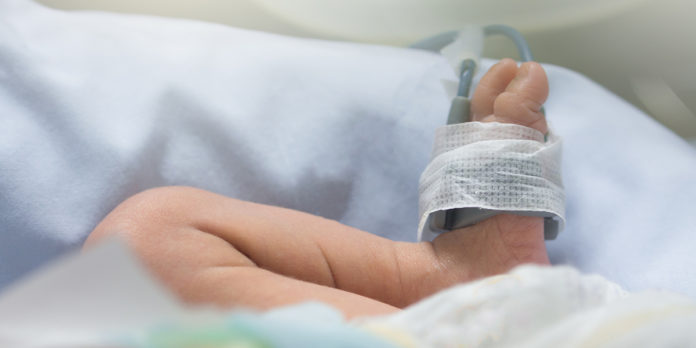
Researchers at The University of Western Australia and King Edward Memorial Hospital have teamed up with an Australian molecular diagnostics company to develop a new low-cost test to identify women at risk of delivering a preterm baby.
Professor Jeeffrey Keelan, Head of Laboratories at UWA’s Division of Obstetrics and Gynaecology and Deputy Director of Women and Infants Research Foundation (WIRF) at King Edward Memorial Hospital (KEMH), said preterm birth was the single major cause of death and disability in children aged under five in the developed world. Around 15 million babies worldwide are born preterm each year, including around 25,000 Australian babies.
The UWA research team, including Head of Obstetrics and Gynaecology Professor John Newnham, and research fellow Dr Matt Payne have been working with molecular diagnostics company SpeeDx Pty Ltd to develop a test to identify women at risk in mid-pregnancy. The test involves taking a vaginal swab and testing it for a specific set of bacteria to determine which women would benefit from targeted treatment.
“Women who test positive for the bacteria are at significantly increased risk of delivering preterm (less than 37 weeks’ gestation),” Professor Keelan said.
“We know that bacterial infections of the womb are a major cause of early birth but until now we haven’t been able to identify women at risk with any degree of accuracy, so antibiotic treatment hasn’t been particularly successful or widely adopted.
“The new test enables us to identify women at risk early in pregnancy, allowing timely treatment with antibiotics and probiotics to remove the bacteria, restore a healthy vaginal microbiome and enable the pregnancy to continue until full term.”
The research team aims to recruit more than 6000 Australian women to take part in a clinical trial, part-funded by a $1.7 million grant from the Federal Government’s National Health and Medical Research Council. The research comprises part of WIRF’s Preterm Birth Prevention Initiative: The Whole Nine Months.
Professor Keelan said introduction of the combined test and treatment program could reduce the preterm birth rate in Australia by up to 30 per cent. Babies born prematurely, particularly before 34 weeks’ gestation, are at increased risk of serious complications involving the gut, lungs, heart and brain and often have lifelong health problems associated with their vision, hearing and mental capacity.
“The new test and treatment could prevent the premature birth of thousands of Australian babies each year, particularly the most premature and vulnerable infants, greatly reducing the rates of death and serious handicaps and saving more than a billion dollars each year in perinatal healthcare costs,” he said.
The new test and treatment program will be assessed over the next four years through a randomised clinical trial. If successful, routine screening and treatment could be instigated in early pregnancy to lower the rates of prevent preterm birth, providing a healthier start to many lives in Australia and worldwide.
(Source: The University of Western Australia)









